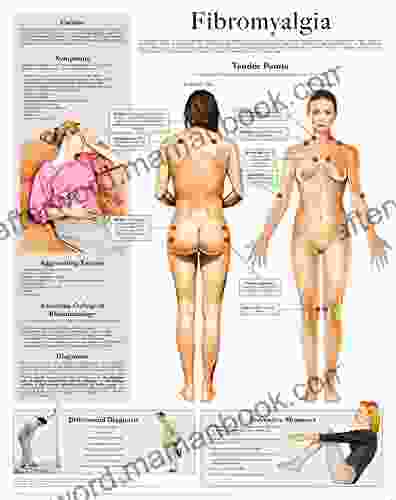Catatonia: Shutdown and Breakdown in Autism Spectrum Disorder


Catatonia is a complex neuropsychiatric syndrome characterized by a range of motor and behavioral abnormalities, including:
4.7 out of 5
| Language | : | English |
| File size | : | 1677 KB |
| Text-to-Speech | : | Enabled |
| Screen Reader | : | Supported |
| Enhanced typesetting | : | Enabled |
| Word Wise | : | Enabled |
| Print length | : | 163 pages |
* Decreased or absent movement (catatonic stupor) * Unusual body postures (catatonic rigidity) * Waxy flexibility (maintaining a posture imposed by others) * Mutism (not speaking) * Negativism (resisting instructions or requests) * Echoing (repeating words or phrases) * Stereotypies (repetitive movements)
Catatonia can occur in various psychiatric disorders, including schizophrenia, bipolar disorder, and autism spectrum disorder (ASD). In the context of ASD, catatonia often manifests as a sudden and significant change in behavior, marked by social withdrawal, decreased communication, and motor abnormalities.
Epidemiology and Prevalence
The prevalence of catatonia in ASD is estimated to be around 10-20%. It typically occurs in children and adolescents, with a mean age of onset around 12 years. Catatonia in ASD is more common in males than females.
Symptoms of Catatonia in ASD
The symptoms of catatonia in ASD can vary widely, depending on the severity and duration of the episode. Common symptoms include:
* Motor Symptoms: * Decreased or absent movement * Unusual body postures * Waxy flexibility * Stereotypies * Behavioral Symptoms: * Mutism * Negativism * Echoing * Social withdrawal * Decreased communication * Other Symptoms: * Irritability * Anxiety * Aggression * Self-injury
Causes of Catatonia in ASD
The exact cause of catatonia in ASD is unknown. However, several factors are believed to contribute, including:
* Neurological Abnormalities: Dysregulation in certain neurotransmitter systems, particularly dopamine and serotonin, is thought to play a role. * Genetic Factors: Genetic mutations associated with ASD may increase the risk of developing catatonia. * Environmental Factors: Stressful life events, such as a change in routine or a traumatic experience, can trigger catatonic episodes in individuals with ASD.
Diagnosis of Catatonia in ASD
Diagnosing catatonia in ASD can be challenging, as the symptoms overlap with those of other neurological and psychiatric conditions. A comprehensive clinical evaluation is essential, including:
* Physical examination * Neurological examination * Psychiatric history and assessment * Observation of behavior
The Bush-Francis Catatonia Rating Scale is a standardized tool commonly used to assess catatonic symptoms.
Treatment of Catatonia in ASD
Treatment for catatonia in ASD typically involves a combination of medications and behavioral interventions.
* Medications: Antipsychotics, benzodiazepines, and stimulants are commonly used to manage the motor and behavioral symptoms of catatonia. * Behavioral Interventions: Speech therapy, occupational therapy, and social skills training can help improve communication, social skills, and motor functioning. * Environmental Modifications: Providing a safe and predictable environment, reducing stress, and maintaining consistency in routines can help prevent or manage catatonic episodes.
Prognosis and Outcomes
The prognosis for catatonia in ASD varies depending on the severity and duration of the episode. Catatonic episodes typically last from a few weeks to several months. With appropriate treatment, most individuals with ASD experience improvement in symptoms and a return to normal functioning. However, some individuals may experience chronic catatonia or relapse into catatonic episodes.
Catatonia is a complex neuropsychiatric syndrome that can occur in autism spectrum disorder. Characterized by a range of motor and behavioral abnormalities, catatonia can significantly impact an individual's social, emotional, and physical functioning. Accurate diagnosis and prompt treatment are essential to improve outcomes and prevent complications. With a comprehensive approach that includes medications, behavioral interventions, and environmental modifications, most individuals with ASD can experience significant improvement in their symptoms and quality of life.
Additional Resources
* National Institute of Mental Health: Catatonia * Autism Speaks: Catatonia in Autism * The Bush-Francis Catatonia Rating Scale
4.7 out of 5
| Language | : | English |
| File size | : | 1677 KB |
| Text-to-Speech | : | Enabled |
| Screen Reader | : | Supported |
| Enhanced typesetting | : | Enabled |
| Word Wise | : | Enabled |
| Print length | : | 163 pages |
Do you want to contribute by writing guest posts on this blog?
Please contact us and send us a resume of previous articles that you have written.
 Top Book
Top Book Novel
Novel Fiction
Fiction Nonfiction
Nonfiction Literature
Literature Paperback
Paperback Hardcover
Hardcover E-book
E-book Audiobook
Audiobook Bestseller
Bestseller Classic
Classic Mystery
Mystery Thriller
Thriller Romance
Romance Fantasy
Fantasy Science Fiction
Science Fiction Biography
Biography Memoir
Memoir Autobiography
Autobiography Poetry
Poetry Drama
Drama Historical Fiction
Historical Fiction Self-help
Self-help Young Adult
Young Adult Childrens Books
Childrens Books Graphic Novel
Graphic Novel Anthology
Anthology Series
Series Encyclopedia
Encyclopedia Reference
Reference Guidebook
Guidebook Textbook
Textbook Workbook
Workbook Journal
Journal Diary
Diary Manuscript
Manuscript Folio
Folio Pulp Fiction
Pulp Fiction Short Stories
Short Stories Fairy Tales
Fairy Tales Fables
Fables Mythology
Mythology Philosophy
Philosophy Religion
Religion Spirituality
Spirituality Essays
Essays Critique
Critique Commentary
Commentary Glossary
Glossary Bibliography
Bibliography Index
Index Table of Contents
Table of Contents Preface
Preface Introduction
Introduction Foreword
Foreword Afterword
Afterword Appendices
Appendices Annotations
Annotations Footnotes
Footnotes Epilogue
Epilogue Prologue
Prologue Kassia St Clair
Kassia St Clair Susan Meyers
Susan Meyers 4th Edition Kindle Edition
4th Edition Kindle Edition Linda Griffiths
Linda Griffiths Nancy L Silk
Nancy L Silk Brandon Mcnulty
Brandon Mcnulty Deborah Brautigam
Deborah Brautigam Ward Larsen
Ward Larsen Alice Wilson
Alice Wilson Miriam Troxler
Miriam Troxler Michelle Lowbridge
Michelle Lowbridge M E Thomas
M E Thomas Maggie Weldon
Maggie Weldon Michael W Simmons
Michael W Simmons Ed Brisson
Ed Brisson Andrew Kirby
Andrew Kirby Omar Khayyam
Omar Khayyam Judy F Carr
Judy F Carr Jason Wallace
Jason Wallace Ramdhari Singh Dinkar
Ramdhari Singh Dinkar
Light bulbAdvertise smarter! Our strategic ad space ensures maximum exposure. Reserve your spot today!

 Jerome PowellBach BWV 1031: A Comprehensive Analysis and Appreciation of Tzvi Erez's Piano...
Jerome PowellBach BWV 1031: A Comprehensive Analysis and Appreciation of Tzvi Erez's Piano...
 Zadie SmithFibromyalgia Chart Full Illustrated: Detailed Guide to Symptoms, Causes, and...
Zadie SmithFibromyalgia Chart Full Illustrated: Detailed Guide to Symptoms, Causes, and... Tennessee WilliamsFollow ·2.3k
Tennessee WilliamsFollow ·2.3k Alex FosterFollow ·12.6k
Alex FosterFollow ·12.6k Fletcher MitchellFollow ·14k
Fletcher MitchellFollow ·14k Ernest J. GainesFollow ·16.9k
Ernest J. GainesFollow ·16.9k Chase SimmonsFollow ·6.3k
Chase SimmonsFollow ·6.3k Oliver FosterFollow ·5.4k
Oliver FosterFollow ·5.4k Andy ColeFollow ·18.5k
Andy ColeFollow ·18.5k Galen PowellFollow ·8.8k
Galen PowellFollow ·8.8k

 Bryce Foster
Bryce FosterViolin Is Easy: A Comprehensive Guide for Beginners
The violin is a...

 Cristian Cox
Cristian CoxThe True Story Of The Ivy League Cowboys Who Raided The...
In the early 2000s, a group of Ivy League...

 Ken Follett
Ken FollettUnraveling the Enchanting World of Menewood: A...
Embark on an enthralling...

 Phil Foster
Phil FosterNorth Poems by Seamus Heaney: An Exploration of Place,...
Seamus Heaney's North...

 Jack Butler
Jack ButlerFleeting Encounters: The Enigmatic Transience of Maria...
In the annals of literary history, fleeting...

 Eliot Foster
Eliot FosterA Haiku Summer: Capturing the Essence of the Season in...
Summer is a time of warmth,...
4.7 out of 5
| Language | : | English |
| File size | : | 1677 KB |
| Text-to-Speech | : | Enabled |
| Screen Reader | : | Supported |
| Enhanced typesetting | : | Enabled |
| Word Wise | : | Enabled |
| Print length | : | 163 pages |








